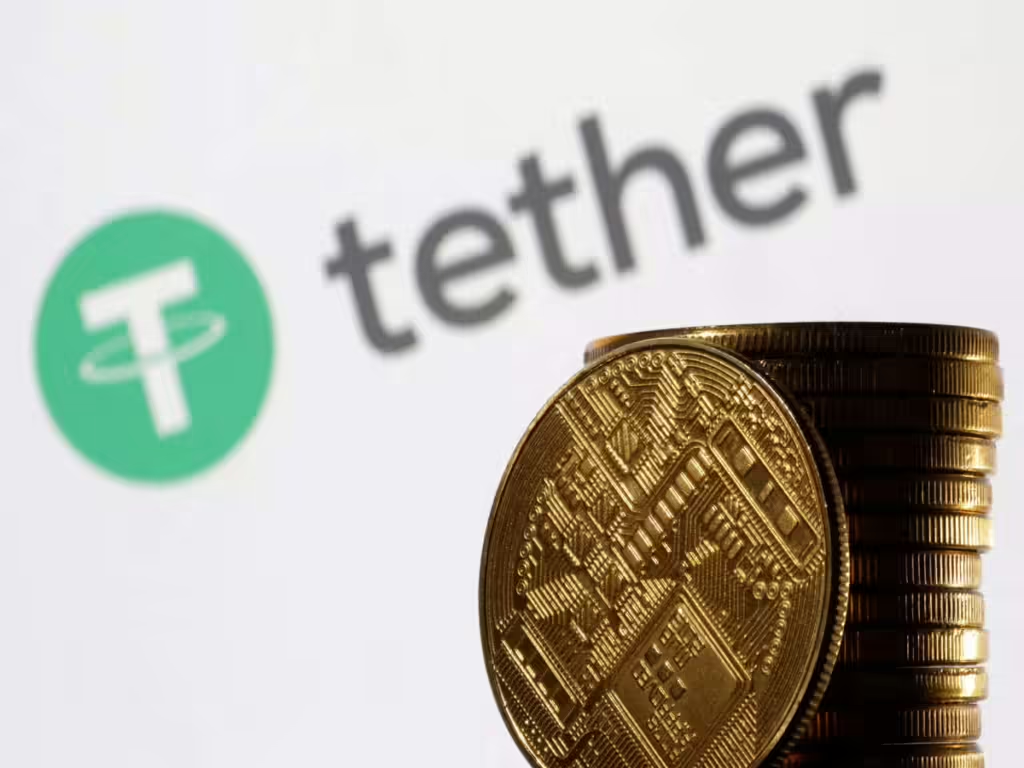The rapid expansion of the stablecoin market has captured the attention of the cryptocurrency world, with advocates touting these digital assets as a revolutionary force in the $150 trillion global payments industry. Yet, a recent study, co-developed by Visa, has revealed a startling fact – over 90% of stablecoin transactions volume is not the work of genuine users, but rather bots and large-scale traders. This insight challenges the prevailing view that stablecoins could disrupt traditional financial systems, prompting a reevaluation of stablecoin use cases and their real impact on payments and digital assets.
The Stablecoin Ecosystem: Sizing the Market and Key Players
The stablecoin market has seen remarkable growth, with projections suggesting the total value of all stablecoins could surge to an impressive $2.8 trillion by 2028. This represents a significant leap from their current circulation, dominated by leading stablecoins Tether (USDT) and USD Coin (USDC), which together capture 97% of the market share. This growth underscores the increasing importance of stablecoin trading volume and their role as pivotal digital assets in the crypto assets landscape.
Unveiling the Automated Landscape: Visa’s Findings on Stablecoin Transactions
A study by Visa and Allium Labs aimed to differentiate between transactions initiated by bots and those by real users, uncovering that a mere 6.8% of the $2.2 trillion in stablecoin transactions in April 2024 were genuine organic payments. This revelation casts doubt on the assumption that stablecoins are set to revolutionize the payments industry, highlighting the prevalence of automated transactions over real stablecoin use cases.
Digging Deeper: The Challenges of Accurately Tracking Stablecoin Transactions
Determining the actual value of cryptocurrency activity has always been complex, with Glassnode estimating that the peak $3 trillion market circulation of digital tokens during the 2021 bull market was closer to $875 billion. This issue is particularly pronounced with stablecoins, where the risk of double-counting transactions can inflate stablecoin transaction volumes, complicating the true valuation of these digital and crypto assets.
The Potential Impact on Stablecoin Adoption and Regulation
The discovery that the vast majority of stablecoin transactions stem from non-genuine users has profound implications for the future of these digital assets. It casts doubt on their level of adoption and usage, potentially challenging the notion that stablecoins could disrupt traditional payment systems. Moreover, this insight may shape the stablecoin regulations, prompting closer scrutiny from policymakers to enhance stablecoin security and ensure market transparency.
The Role of Fintech Giants in the Stablecoin Space

Major fintech players, including PayPal and Stripe, have ventured into the stablecoin market, recognizing its potential to streamline payments. PayPal introduced its own stablecoin, PYUSD, in 2023, aiming to facilitate instant, cost-effective transactions within its payment infrastructure. Similarly, Stripe’s announcement in April 2024 to accept stablecoins for online transactions underscores the growing integration of these digital assets in mainstream payment solutions.
Navigating the Barriers to Stablecoin Adoption
Despite the push from notable fintech companies, the uptake of stablecoin-based payment solutions has been lukewarm. Industry experts, like Pranav Sood from Airwallex, point out the user-friendliness of the technology as a significant hurdle. This sentiment is reflected in the persistent reliance on checks for a substantial portion of payments in the U.S., illustrating the challenges in adopting new payment technologies and leveraging stablecoin use cases effectively.
The Implications for Stablecoin Issuers and Regulators
The realization that real users do not drive the majority of stablecoin transactions has important consequences for both the issuers of these digital assets and the regulators overseeing the cryptocurrency market. It suggests a need for stablecoin issuers to refine their strategies, focusing on improving utility and user experience to foster genuine adoption. Regulators might also step up their efforts to ensure market transparency, mitigate risks, and protect both retail and institutional investors in the digital and crypto assets space.
The Potential for a Regulatory Reckoning
The growing gap between the perceived and actual use of stablecoins could lead to a regulatory overhaul, with authorities examining the industry more closely. This scrutiny could result in stricter reporting requirements, increased transparency, and possibly new regulations governing the issuance and use of stablecoins, potentially reshaping the stablecoin market and impacting the broader cryptocurrency ecosystem.
Stablecoins and the Broader Crypto Landscape
The findings about the dominance of automated, non-user activity in the stablecoin market raise broader concerns about the cryptocurrency industry’s health. If a significant portion of stablecoin transaction volume is artificial, it could signal similar issues across other crypto market segments, questioning the overall credibility and adoption of digital and crypto assets.
The Path Forward: Enhancing Transparency and Fostering Genuine Adoption
To address the challenges highlighted by the Visa study, the stablecoin industry and its stakeholders will need to focus on enhancing transparency, improving user-friendliness, and fostering genuine adoption through organic payments. This may involve the development of robust reporting mechanisms for stablecoin security, the implementation of clear guidelines and standards, and the prioritization of real-world utility over speculative trading in the stablecoin market. By taking these steps, the stablecoin ecosystem can work to regain the trust of regulators, investors, and the broader public, solidifying its position among digital assets.
The Role of Blockchain Analytics in Uncovering Stablecoin Dynamics
The Visa study’s reliance on advanced blockchain analytics to separate genuine stablecoin transactions from automated activity underscores the importance of data-driven insights in understanding the true nature of the cryptocurrency market. As the industry continues to evolve, the application of sophisticated analytical tools will be crucial in providing a more accurate and nuanced understanding of stablecoin usage, blockchain transactions, and adoption, shaping the future of digital assets and stablecoin transaction volume.
Conclusion: Navigating the Stablecoin Conundrum
The revelations from the Visa study present a sobering reality check for the stablecoin market, challenging the prevailing narrative of these digital assets as the key to revolutionizing the global payments industry with organic payments. By acknowledging the predominance of automated, non-user activity, industry stakeholders and regulators can work to address the underlying issues and foster the genuine adoption of stablecoins, focusing on practical stablecoin use cases. As the cryptocurrency ecosystem continues to mature, the ability to separate signal from noise will be paramount in charting a path forward that aligns with the true needs and behaviors of users.
FAQ
1) What is the current state of the stablecoin market?
The stablecoin market is rapidly expanding, with projections suggesting it could reach a total value of $2.8 trillion by 2028. Leading stablecoins Tether (USDT) and USD Coin (USDC) currently dominate the market.
2) What did the Visa study reveal about stablecoin transactions?
The Visa study revealed that over 90% of stablecoin transaction volume is not from genuine users but rather bots and large-scale traders. This finding challenges the view that stablecoins could disrupt traditional financial systems.
3) What implications does the Visa study’s findings have on stablecoin adoption and regulation?
The findings cast doubt on the level of adoption and usage of stablecoins and may shape future regulations. Policymakers may increase scrutiny to enhance stablecoin security and ensure market transparency.
4) What role do fintech giants play in the stablecoin space?
Major fintech players like PayPal and Stripe have ventured into the stablecoin market, recognizing its potential to streamline payments. They have introduced their own stablecoins and started accepting them for online transactions.
Table of Contents
Disclaimer: This article is for informational purposes only and should not be considered financial or investment advice. Cryptocurrency investments are subject to market risks, and readers should do their own research and consult with professionals before making any investment decisions. Hash Herald is not responsible for any losses in the market.













